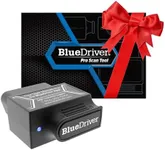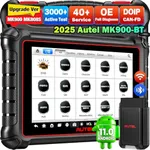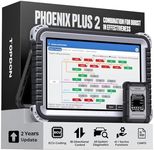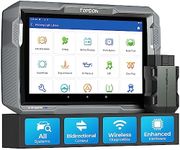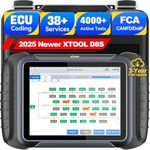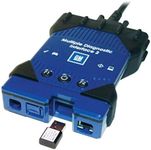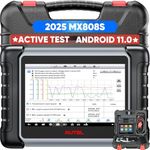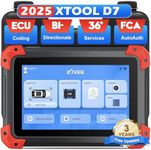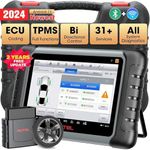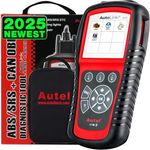Buying Guide for the Best Automotive Scan Tools
Choosing the right automotive scan tool can make diagnosing and fixing car problems much easier, whether you're a DIY enthusiast or a professional mechanic. The right tool helps you read error codes, monitor vehicle systems, and sometimes even perform advanced functions like programming or resetting service lights. To find the best fit, it's important to understand the key features and specifications, and match them to your needs and the types of vehicles you plan to work on.CompatibilityCompatibility refers to which vehicles the scan tool can work with. Some tools are universal and work with most cars made after a certain year, while others are designed for specific brands or models. It's important because a tool that isn't compatible with your car won't be able to read codes or provide useful information. When looking at compatibility, check if the tool supports the make, model, and year of your vehicle. If you work on many different cars, a tool with broad compatibility is best. If you only work on your own car, make sure the tool specifically supports it.
OBD Protocol SupportOBD protocol support means which communication standards the scan tool can use to talk to your car's computer. Most modern cars use OBD-II, but there are different protocols within OBD-II, and older cars may use OBD-I. This is important because a tool that doesn't support your car's protocol won't work. If your car is from 1996 or newer, OBD-II support is usually enough. For older vehicles, check if the tool supports OBD-I or other specific protocols. Always match the tool's protocol support to your vehicle's requirements.
FunctionalityFunctionality describes what the scan tool can actually do. Basic tools can read and clear error codes and show simple data, while advanced tools can perform tasks like live data streaming, ABS/SRS diagnostics, service resets, and even programming. This is important because more functions mean more ways to diagnose and fix problems. If you just want to check engine lights, a basic tool is enough. If you want to do more complex repairs or maintenance, look for a tool with advanced features. Think about what tasks you want to perform and choose a tool that covers those needs.
User InterfaceThe user interface is how you interact with the scan tool, such as through buttons, a touchscreen, or a smartphone app. A clear, easy-to-use interface is important because it makes the tool more effective and less frustrating. Some tools have simple screens and menus, while others use color displays or connect to your phone for more detailed information. If you prefer simplicity, look for a tool with a straightforward interface. If you like more information and features, a tool with a larger screen or app support might be better.
Update CapabilityUpdate capability refers to whether the scan tool can receive software updates to support new vehicles or add features. This is important because car technology changes over time, and updates keep your tool useful. Some tools can be updated via the internet, while others cannot. If you plan to use the tool for many years or on newer cars, choose one that allows easy updates. If you only need it for a specific car and don't plan to upgrade, this may be less important.
Data Display and StorageData display and storage means how the scan tool shows information and whether it can save data for later review. Some tools show basic codes, while others display live data graphs or allow you to record and review information. This is important for tracking down intermittent problems or sharing data with a mechanic. If you want to analyze problems in detail, look for a tool with good data display and storage options. If you just want to check codes, basic display is enough.
